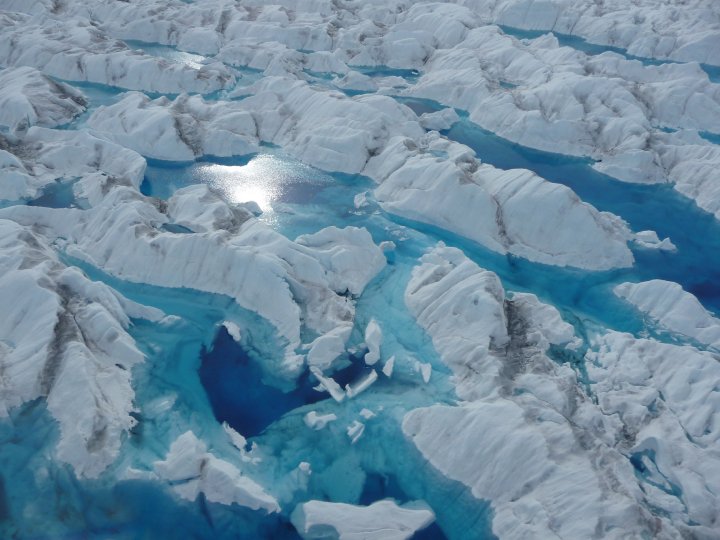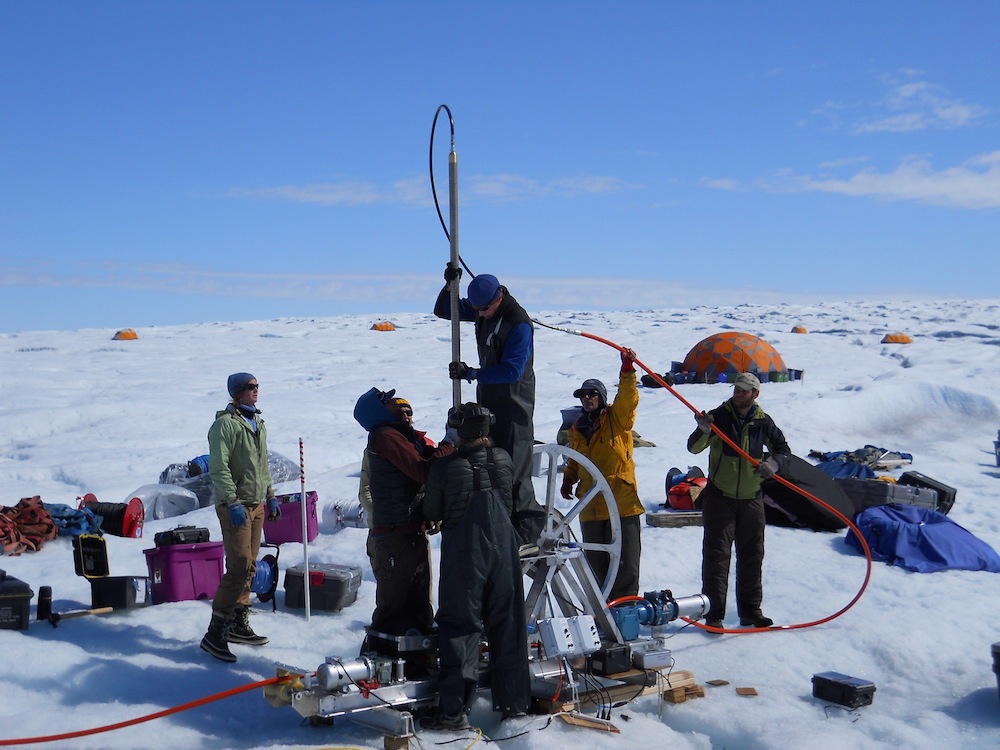New Clues to Greenland's Hidden Plumbing

What happens under Greenland's ice sheet, where water, ice and rock meet, is key to predicting how its glaciers will react to global warming.
Turns out, beneath the island's mysterious middle, where the ice is thick and the bottom bedrock difficult to reach, meltwater flows through channels and voids that open when flowing ice travels over rough ground, a new study finds. The passageways are spaces between the rock and the overlying ice. The results, based on computer modeling and fieldwork observations in Greenland, were published today (Aug. 15) in the journal Science.
The study suggests that meltwater flows through a different network in the interior of the ice sheet than at its edges, said lead study author Toby Meierbachtol, a graduate student at the University of Montana. [Image Gallery: Greenland's Melting Glaciers]
Ice vs. water
In the steep canyons at the edge of the ice sheet, near the coast, gushing rivers and streams underneath the ice lubricate glaciers, speeding their flows to the sea. The frictional heat of water flowing down the precipices melts the ice from below, creating channels and cavities. The meltwater must fight to maintain its space against the enormous weight of the ice, which tries to close the voids.
"There is a constant battle between opening and closing," Meierbachtol said.
But away from the coast, Greenland is mostly flat. Without the frictional heating gained from flowing down canyons, water can't melt big channels, the researchers believe. Instead, the meltwater collects in pits and passageways that open up as the ice shifts.
Get the world’s most fascinating discoveries delivered straight to your inbox.
"The geometry of Greenland is such that there's not as much energy to drive that heating, so the heating is quite a bit less away from the [edge]," Meierbachtol told LiveScience. "As a result, that melting effect is muted, and we find other processes are quite important. One such process that could be as important is the sliding of the ice itself, [which] opens up space on the backside of bedrock bumps."
Meierbachtol and his colleagues drilled 23 boreholes to the bed of the Greenland ice sheet, in ice up to 2,700 feet (825 meters) thick and up to 21 miles (34 kilometers) from the ice sheet edge. They measured water pressure to gauge the strength of flow in the subglacial drainage network.
Predicting Greenland's future
The meltwater under the ice sheet is a key driver of how fast glaciers flow, both in the middle and at the edge of Greenland's ice sheet, the researchers said.
And in recent decades, the amount of summer meltwater has increased.
Seasonal summer heating thaws the ice sheet, forming a network of aquamarine ponds. The area of melting ice and the length of the melt season both are increasing, with a record 97 percent of the surface transformed to water in 2012. However, not all surface melt reaches the bottom of the ice sheet, Meierbachtol said. For example, some soaks into the firn, which is layers of compacted snow.
Understanding how meltwater behaves beneath the ice sheet is a key factor in modeling Greenland's future response to climate change, the researchers said.
"We need to know the mechanisms of basal motion, because this is a significant component of ice motion, and this determines how rapidly ice is discharged towards lower elevations, where it is exposed to melt," said Martin Truffer, a glaciologist at the University of Alaska, Fairbanks, who was not involved in the study.
"This study shows that some of the seasonal variation that is well-known on alpine glaciers can indeed be observed near the margin of the ice sheet," Truffer said in an email interview with LiveScience. "But the subglacial plumbing operates differently away from the margins, where the ice sheet is flat and hydraulic gradients are low. This is an interesting area, because it appears to be subject to more water in recent years. Also, if warming persists, we can expect that the area of the glacier bed that can be reached by meltwater will expand inland," he said.
Email Becky Oskin or follow her @beckyoskin. Follow us @livescience, Facebook & Google+. Original article on LiveScience.




